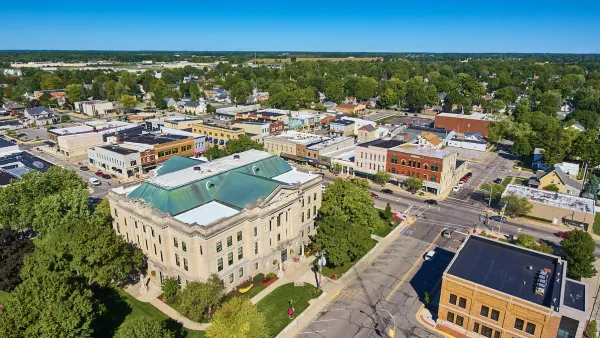A new report from the NRDC and Move LA documents the implementation of California's landmark SB 375, the nation’s first law to link transportation and land use planning with greenhouse gas emissions.
Kaid Benfield traces the history of the pioneering legislation, which was passed in 2008 with contributions and support "from a diverse collection of commercial, real estate, government, housing and environmental interests [including the NRDC]," and provides a summary of the progress made in implementing the law over the past four years, as outlined in the report.
"Today," says Benfield, "the law is being implemented: three of California's four
largest major metropolitan regions – Southern California, Sacramento,
and San Diego – have adopted their plans, called sustainable communities
strategies, technically parts of their transportation plans..."
"The report finds much to praise in the new plans:
'As intended by SB 375, each region created its own tailored mix
of land use decisions, transportation investments, and policies to
achieve its target. These sustainable community strategies lay the
foundation for smarter, more efficient growth and much healthier
communities, while setting a high benchmark for the rest of California's
regions."'
The report, titled The Bold Plans for California Communities, doesn't just look backwards, as Benfield notes, it "includes a number of policy recommendations to help ensure effective implementation of the new community strategies."
FULL STORY: How California is planning growth for a prosperous economy and clean environment

National Parks Layoffs Will Cause Communities to Lose Billions
Thousands of essential park workers were laid off this week, just before the busy spring break season.

Retro-silient?: America’s First “Eco-burb,” The Woodlands Turns 50
A master-planned community north of Houston offers lessons on green infrastructure and resilient design, but falls short of its founder’s lofty affordability and walkability goals.

Delivering for America Plan Will Downgrade Mail Service in at Least 49.5 Percent of Zip Codes
Republican and Democrat lawmakers criticize the plan for its disproportionate negative impact on rural communities.

Test News Post 1
This is a summary

Test News Headline 46
Test for the image on the front page.

Balancing Bombs and Butterflies: How the National Guard Protects a Rare Species
The National Guard at Fort Indiantown Gap uses GIS technology and land management strategies to balance military training with conservation efforts, ensuring the survival of the rare eastern regal fritillary butterfly.
Urban Design for Planners 1: Software Tools
This six-course series explores essential urban design concepts using open source software and equips planners with the tools they need to participate fully in the urban design process.
Planning for Universal Design
Learn the tools for implementing Universal Design in planning regulations.
EMC Planning Group, Inc.
Planetizen
Planetizen
Mpact (formerly Rail~Volution)
Great Falls Development Authority, Inc.
HUDs Office of Policy Development and Research
NYU Wagner Graduate School of Public Service




























